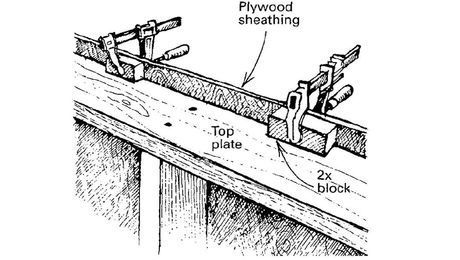Taking a Look at Windows
In a fog about choosing windows? You have to consider glazing systems, window styles and frame materials.

Synopsis: This article explains glass technology and window construction, discusses the pros and cons of various types of window designs, and compares the performance of wood, clad, vinyl, aluminum, and fiberglass windows. Included is a sidebar that explains how windows are rated, and a chart comparing the relative costs of various types of windows.
Part of my job as an editor is to read the hundreds of article proposals that arrive in Fine Homebuilding’s mailbox. For me, nothing sends up the red flag of rejection faster than seeing the word fenestration in a proposal letter. As in, “We tried to balance the subtleties of the fenestration with the implied massing of the built volumes.”
Fenestration is a highfalutin word favored by architects and window manufacturers. It comes from the Latin word fenestra, which is the opening between the inner ear and middle ear.
Fenestration refers to the choice of windows in a wall or building. When choosing windows for a house, you’ll have to decide not only the type of windows casement, double hung, fixed, awning or slider but also the kind of glass to use and the material used for the windows’ frames. There’s a lot of information, but it doesn’t have to be confusing.
I’ve always thought that the most beautiful words — fenestration being an ugly one — are those that express ideas simply. So during the course of this article, I’ll try to sort through all the window options without using the dreaded F-word.
Glass technology and window styles
Historically, the evolution of window styles has coincided with technological advances in glass-making. American colonists didn’t use little panes of glass in their windows because they were trying to make their houses look like Ye Olde Gift Shoppe. Their windows had small panes because the technology of the day prohibited the manufacture of flat pieces of glass bigger than about 4 in. square.
As glass-making technology improved and the price of larger panes of glass got less expensive, windows with larger, fewer panes per window became common. In the early 18th century, it was not unusual for a sash to have 12 panes of glass, or lites, per sash. By the beginning of this century, one-lite windows were getting popular. Float glass, a new process developed in the late 1950s, makes it possible to produce pieces of nearly flawless glass in single-lite window sizes that are limited only by the size of the wall in which you want to install them.
Glass and energy-efficiency
In the 1970s, when everyone’s energy using consciousness was raised, people began to realize that most windows were nothing more than holes in the wall into which you pour heat. Storm windows had been in use for a long time, but storm windows are often inconvenient and ill-fitting, and they don’t adapt readily to all window styles; for instance, you can’t open a casement window more than an inch or two if there’s a storm window attached to the frame’s exterior.
For more photos and details, click the View PDF button below:
Fine Homebuilding Recommended Products
Fine Homebuilding receives a commission for items purchased through links on this site, including Amazon Associates and other affiliate advertising programs.

Anchor Bolt Marker

All New Bathroom Ideas that Work

100-ft. Tape Measure


























